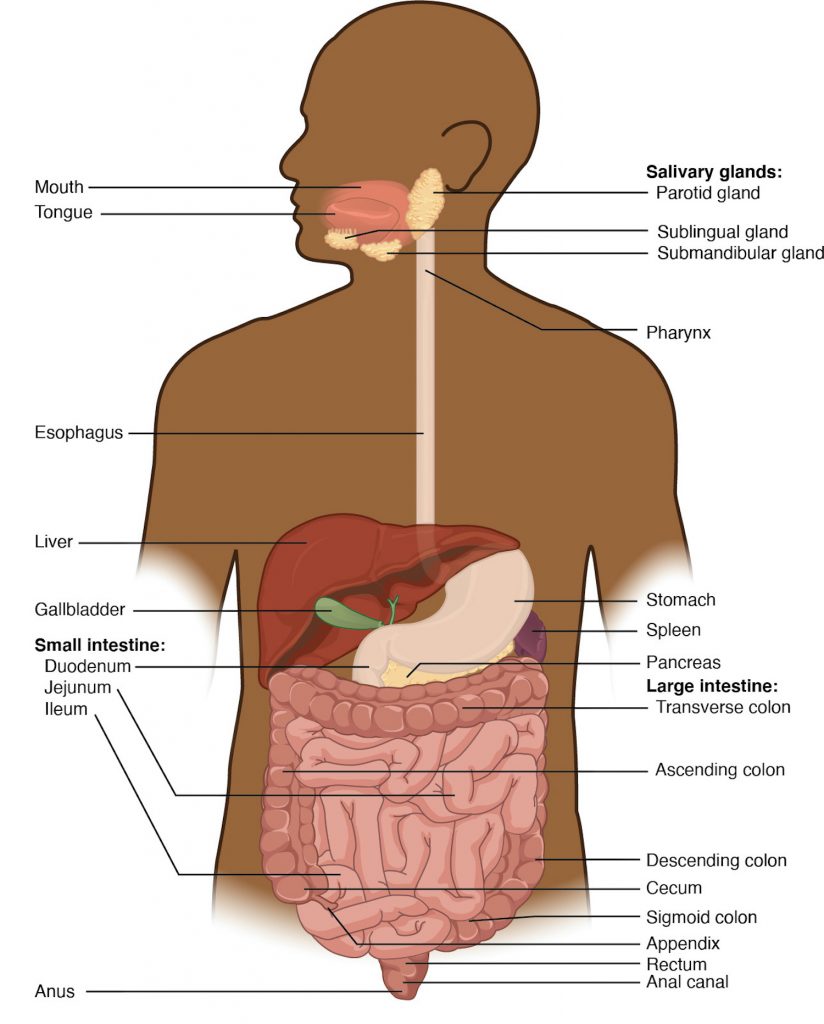14.2 Introduction to the Gastrointestinal System
The gastrointestinal system (also called the GI system) is important to assess because it is responsible for nutrition, digestion, absorption, hydration, and defecation. You may also have heard it referred to as the digestive system. As a nurse, your assessment of the GI system provides information about how the system is functioning and potential cues that require action.
GI System Components
As per Figure 14.1, the main components of the GI system include:
- The upper GI tract (oral cavity, esophagus, stomach, and the first part of the small intestine [i.e., the duodenum]).
- The lower GI tract (small and large intestine, rectum, anus).
- The accessory glands and organs (salivary glands, liver, pancreas, gallbladder) and lymphatic organs and tissue (tonsils, spleen, appendix).

You have already learned about the anatomy and physiology of the GI system; see Video 1 for a quick overview:
Video 1: Overview of the GI system.
Activity: Check Your Understanding

